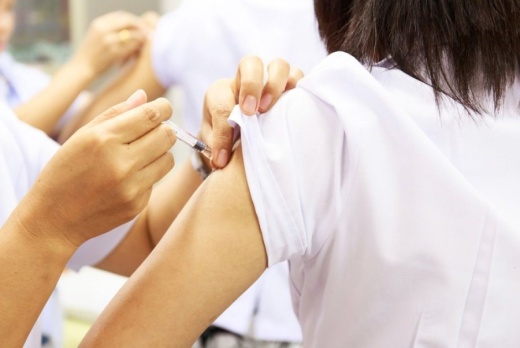The DSHS stated the official timeline for the Texas COVID-19 Vaccine Plan depends on when the Pfizer vaccine is authorized for use in the United States.
A total of 224,250 doses of the vaccine are expected to be shipped to 109 hospitals in 34 counties across Texas, as stated in the DSHS press release.
The only city in Williamson County on the list for vaccine allocation, submitted by the DSHS to the Centers for Disease Control and Prevention, is Round Rock. The Round Rock Medical Center and Baylor Scott & White Health MC Round Rock are both slated to receive 975 doses each.
In Travis County, eight hospitals in the city of Austin are expected to receive a total of 13,650 doses of the Pfizer vaccine.
Hospitals were selected by the DSHS based on the number of health care workers who are able to be vaccinated quickly, in addition to the capacity for vaccine storage. The minimum number of doses a provider can receive is 975.
The supply of the first round of vaccines will be limited. More vaccines will be on the way in the next few weeks, according to the DSHS, which will include the Moderna vaccine once it has been authorized.
DSHS Commissioner Dr. John Hellerstedt approved the allocation strategy for the vaccine based on the Expert Vaccine Allocation Panel. The panel placed an emphasis on protecting health care workers caring for COVID-19 patients.
The CDC has not yet approved the DSHS vaccination plan. Guidelines for distribution will be updated once the CDC has given feedback.
Under the Texas COVID-19 Vaccine Plan submitted by the DSHS to the CDC, there is a four-phased approach for distribution:
Phase 1
- The supply of vaccine doses will be limited
- The administration of the vaccine will be focused on vulnerable and front-line workers.
- Residents in remote areas with difficulty accessing services could also receive the first round.
- The inventory, distribution and repositioning of the vaccine will be monitored to ensure visibility.
- Procedures for mobile clinics planned for Phase 2 will be mapped out.
- A larger number of doses will be available, expanding distribution.
- There will be increased access to vaccination services for larger populations.
- A focus on front-line workers and high-risk groups will be maintained.
- Additional vaccination provider locations will be made available.
- Pharmacies, doctor's offices and clinics will provide the vaccine.
- Public health sites will be available, including mobile clinics.
- Specialized vaccine teams will target remote areas.
- The supply of the vaccine could exceed demand.
- The vaccine will be widely available and added into routine vaccine programs.
- There will be continued monitoring of COVID-19 vaccine coverage for front-line workers.
- There will be partnerships with private and commercial providers to make services widely available.
- The supply and minimization of vaccine waste will be tracked.
- Vaccine needs will decrease as most of the population will already be vaccinated.
- There will be continued monitoring of COVID-19 vaccine coverage for front-line workers.
- There will be partnerships with private and commercial providers to make services widely available.




